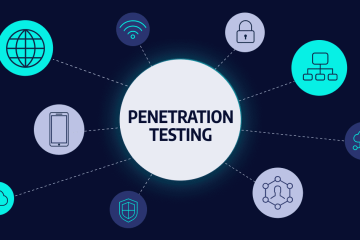For millennia, humans have relied on storytelling to share experiences, ideas, and emotions. From cave paintings depicting hunts to sprawling novels, narratives have served as a powerful tool for connection and understanding. Today, on the cusp of a technological revolution, a new chapter unfolds in this age-old tradition. Enter AI art generators: tools that leverage artificial intelligence to create stunning visuals, breathing life into narratives and offering exciting possibilities for storytelling.
From Humble Beginnings to Boundless Potential: The Evolution of AI Art Generation
The journey of AI art generation began with relatively simple algorithms. Early efforts focused on replicating existing artistic styles or generating abstract patterns. However, with the advent of deep learning and advancements in neural networks, AI art has transcended mere imitation. Modern AI art generators are capable of producing stunningly realistic and imaginative visuals, fueled by vast datasets of existing artwork.
These generators, often accessible through user-friendly interfaces, empower creators with a powerful tool. Gone are the days of meticulous sketching or mastering complex painting techniques. With a few keystrokes and a dash of imagination, anyone can generate captivating visuals that can serve as springboards for storytelling.
The Power of Visuals in Narrative Construction
Visuals have always played a crucial role in storytelling. A single image can evoke a range of emotions, set the scene, and introduce characters more vividly than words alone. Cave paintings documented hunting practices, while hieroglyphics used pictograms to convey complex narratives. The invention of the printing press facilitated the inclusion of illustrations in books, further enriching the storytelling experience.
In the modern era, film, television, and video games have become dominant narrative mediums, all heavily reliant on visuals. A well-placed image or a captivating scene can leave a lasting impression on the audience, solidifying the story’s impact.
Here’s how visuals contribute to narrative construction:
- Setting the Scene: A detailed landscape painting can transport readers to a bustling city square or a desolate alien wasteland. AI art generators can create these settings based on textual descriptions, allowing writers to explore diverse worlds without limitations.
- Introducing Characters: A character’s physical appearance can reveal a lot about their personality and backstory. AI art generators can create portraits based on written descriptions, helping writers visualize their characters and providing readers with a clearer picture.
- Evoking Emotion: A well-composed image can elicit a range of emotions, from joy and wonder to fear and suspense. AI generator art can be used to create scenes that resonate with the reader’s emotional state, enhancing the narrative impact.
- Building Tension: Visuals can be used to build anticipation and suspense. A shadowy figure lurking in the background or a storm brewing on the horizon can create a sense of unease and keep the reader engaged.
AI Art Generators: A Boon for Storytellers
AI art generation technology has taken the world by storm. These tools use machine learning algorithms to analyze vast datasets of images and learn to create new ones based on user prompts. This opens a treasure trove of possibilities for storytellers:
- Overcoming Artist Blocks: Writers often struggle to visualize specific scenes or characters. AI art generators can help overcome these hurdles by creating visuals based on textual descriptions, sparking new ideas and propelling the creative process forward.
- Exploring Diverse Styles: AI art generators can create visuals in a wide range of artistic styles, from photorealism to classic paintings or even comic book aesthetics. This allows writers to tailor the visuals to their specific story and target audience.
- Rapid Prototyping: Storytellers can experiment with different visual concepts quickly using AI art generation. This allows them to iterate and refine their ideas before investing time and resources in traditional illustration techniques.
Beyond Illustration: AI and Background Removal
While AI art generators excel at creating new visuals, background remover powered by AI can also be a valuable asset for storytellers. These tools can seamlessly remove unwanted backgrounds from existing images, allowing writers to:
- Repurpose Existing Artwork: Writers can leverage existing images and manipulate them using AI background removal tools to fit their specific narrative needs. This can be particularly useful for historical fiction or fantasy, where finding the perfect background image might be challenging.
- Create Collages: AI background removal tools can be used to create collages that combine different elements to tell a story. This can be a great way to introduce multiple characters or settings in a single image.
- Focus on the Subject: Removing distracting backgrounds can help draw the reader’s attention to the most important elements of the image, such as the character’s facial expression or a symbolic object.
AI Art Generators: A Boon or a Bane for Storytellers?
The emergence of AI art generators raises pertinent questions for storytellers. Will these tools replace human creativity? Will narratives lose their soul if generated by algorithms? The answer, thankfully, is a resounding no.
AI art generators are best viewed as powerful collaborators, not replacements. They empower storytellers to explore visual possibilities beyond their own artistic limitations. The human element of storytelling remains paramount – crafting compelling characters, weaving intricate plots, and infusing narratives with emotional resonance. AI art generators simply provide the tools to translate those narratives into stunning visuals, enriching the storytelling experience.
The Future of Storytelling: A Symphony of Human and Artificial Creativity
The future of storytelling is brimming with exciting possibilities. As AI art generation continues to evolve, we can expect even more sophisticated tools that seamlessly integrate with the creative process. Imagine interactive AI art generators that respond to the narrative in real-time, generating visuals that adapt and evolve as the story unfolds.
The possibilities extend beyond static images. AI could potentially generate concept art for film and animation, create dynamic storyboards for graphic novels, or even develop immersive virtual environments that transport readers directly into the heart of the narrative.
However, amidst this technological marvel, it’s important to remember that storytelling at its core is a human endeavor. It is the human capacity for imagination, empathy, and emotional intelligence that breathes life into narratives. The true magic lies not in AI-generated visuals alone, but in the synergy between human creativity and the boundless potential of AI art generators.
The Road Ahead: Embracing the Power of AI for Narrative Exploration
The world of storytelling is on the cusp of a transformative era. AI art generators are powerful tools that can enhance and enrich the narrative process. By embracing this technology, storytellers can unlock new avenues for creative expression and engage audiences in deeper ways. As we move forward, the key lies in striking a balance – utilizing AI to amplify human creativity and ensuring that the stories we tell continue to resonate with the human spirit.



